25+ SAMPLE Construction Waste Management Plan
-
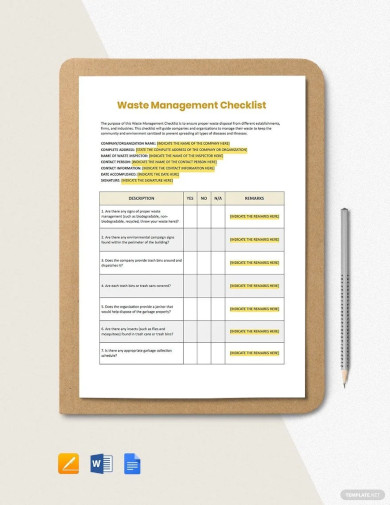
Construction Waste Management Checklist
download now -
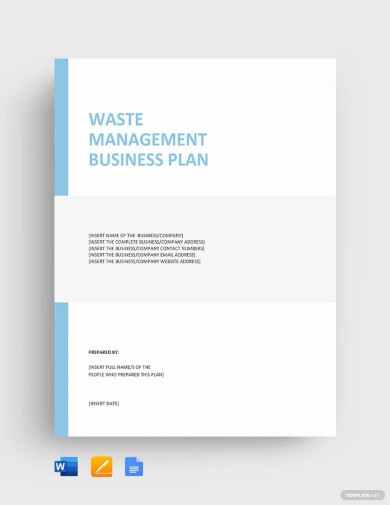
Construction Waste Management Business Plan
download now -
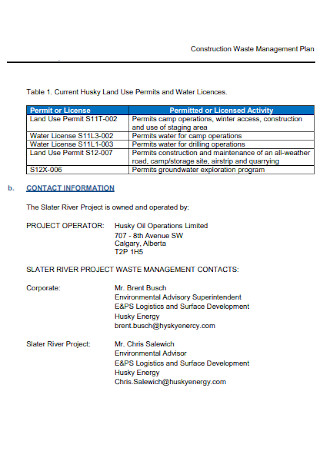
Sample Construction Waste Management Plan
download now -
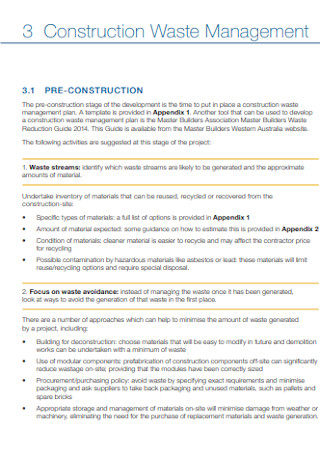
Construction Waste Management Plan
download now -
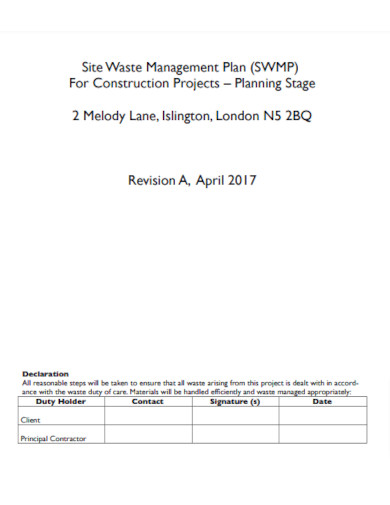
Construction Waste Site Management Plan
download now -

Simple Construction Waste Management Plan
download now -
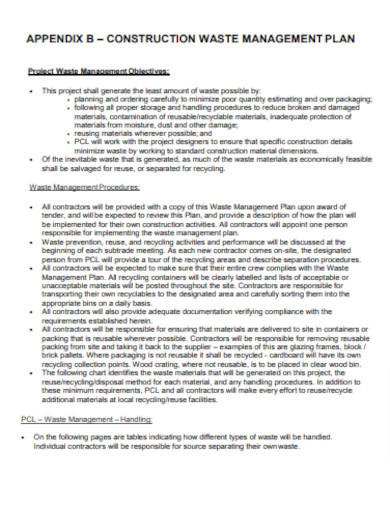
Construction Waste Management Plan Outline
download now -

Sample Construction Waste Management Plan
download now -
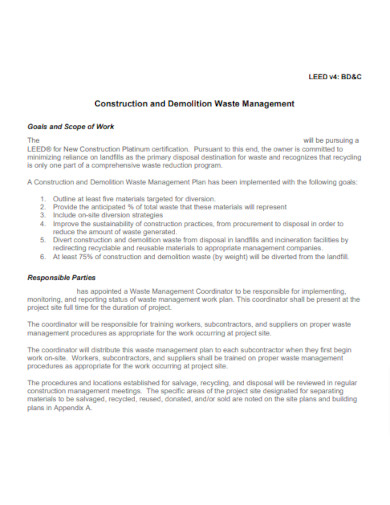
Construction Demolition Waste Management Plan
download now -

Basic Construction Waste Management Plan
download now -
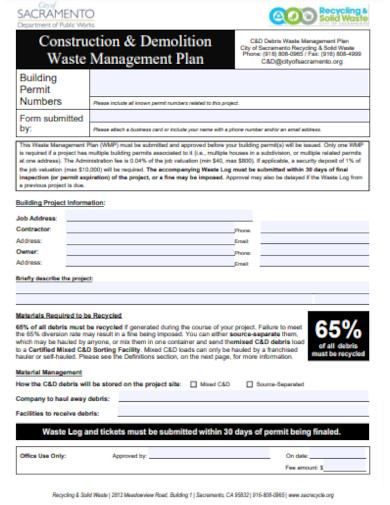
Construction Waste Management Plan Form
download now -

Printable Construction Waste Management Plan
download now -

Construction Waste Management Plan Layout
download now -
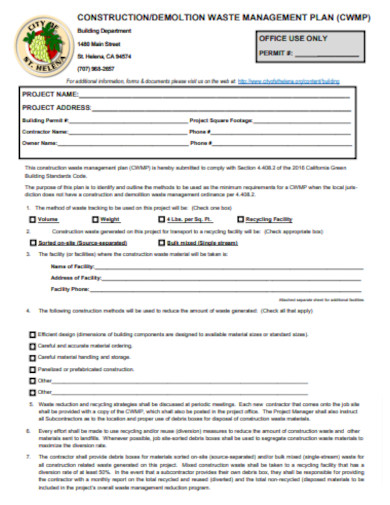
Construction Waste Management Plan Worksheet
download now -
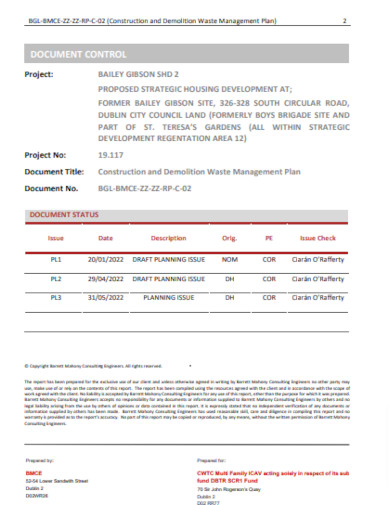
Construction Waste Management Control Plan
download now -
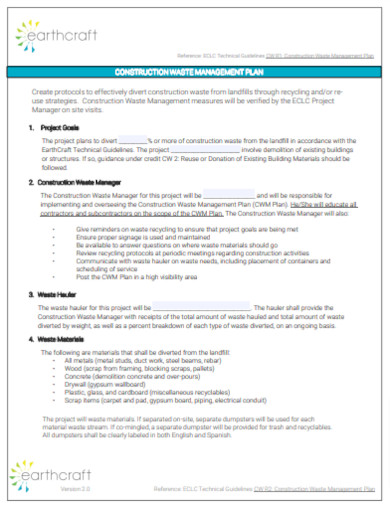
Construction Waste Management Plan Format
download now -
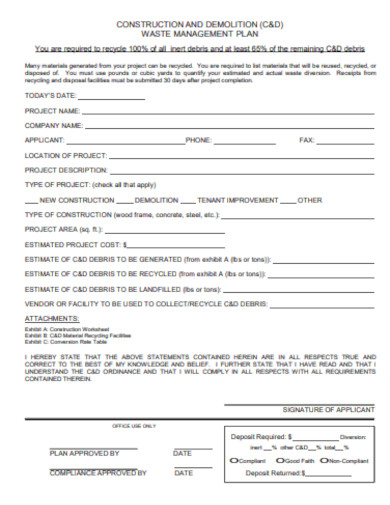
General Construction Waste Management Plan
download now -

Construction Waste Management Plan Policy Statement
download now -
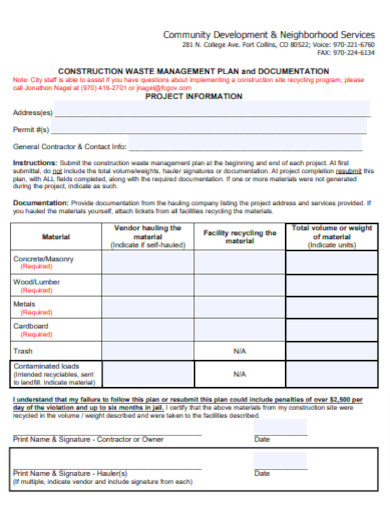
Construction Waste Management Project Plan
download now -
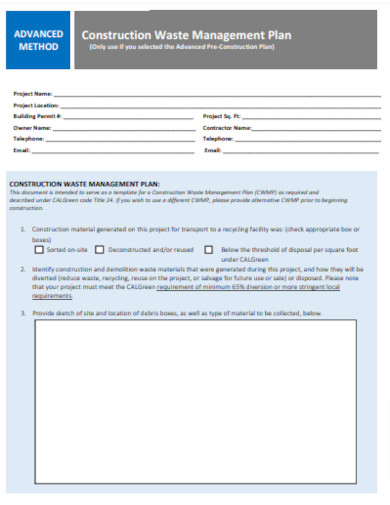
Post Construction Waste Management Plan
download now -
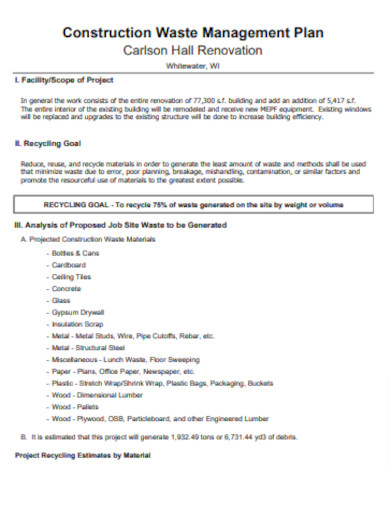
Editable Construction Waste Management Plan
download now -
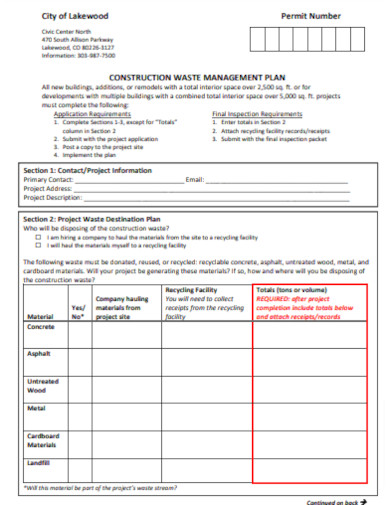
Construction Waste Management Destination Plan
download now -
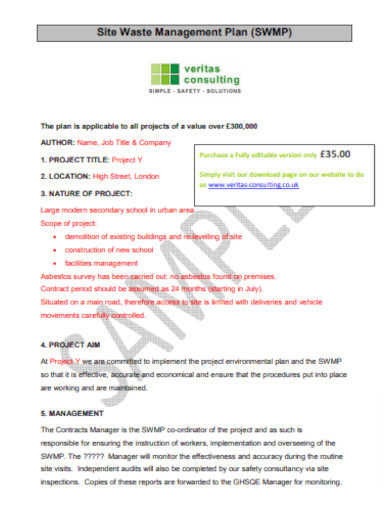
Construction Site Waste Management Plan
download now -
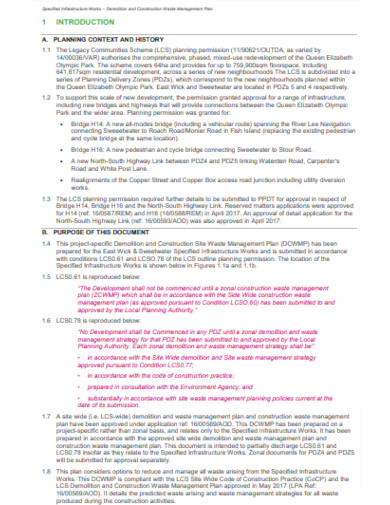
Construction Waste Management Planning
download now -
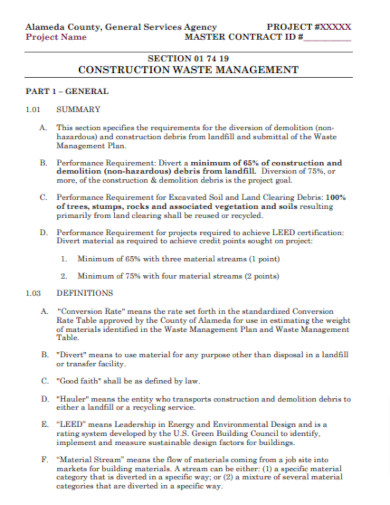
Construction Contract Waste Management Plan
download now -
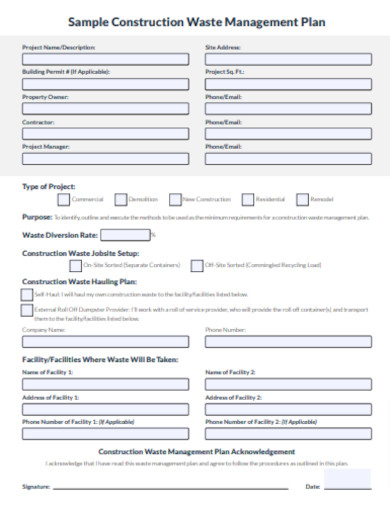
Printable Construction Waste Management Plan
download now
FREE Construction Waste Management Plan s to Download
25+ SAMPLE Construction Waste Management Plan
What is a Construction Waste Management Plan (CWMP)?
Why is it important?
Key Components of a CWMP:
Tips for a Successful CWMP
Challenges in Construction Waste Management Plan
How does a WMP benefit the environment?
What are the core components of a typical WMP?
How often should a WMP be reviewed?
How can a business or project start creating a WMP?
What is the difference between a WMP and a Recycling Plan?
What is a Construction Waste Management Plan (CWMP)?
A CWMP is a detailed outline that lays the foundation for waste reduction and sustainability throughout the construction process. It details the types of waste that will be generated, strategies for their disposal, and methods to minimize their generation in the first place.
Why is it important?
“Importance” is a broad term and is often contextual. Assuming you’re referring to the earlier topic of a “Construction Waste Management Plan (CWMP),” here are the reasons why a CWMP is essential:
1. Environmental Stewardship:
Resource Conservation: Efficient utilization of construction materials means fewer resources are extracted from the earth.
Landfill Reduction: Landfills are filling up rapidly, and construction waste forms a significant part of this. Reducing construction waste can substantially decrease the burden on landfills.
Reduction of Pollution: Dumping construction waste can introduce various pollutants into the environment, affecting both terrestrial and aquatic life.
2. Economic Benefits:
Cost Savings: Efficient management of materials translates to money saved on purchasing unnecessary resources. Moreover, disposing of waste can be expensive. By reducing, reusing, and recycling, disposal costs are minimized.
Value Recovery: Some waste materials can be sold or used in other projects, recovering some of the investment.
3. Social Responsibility:
Public Image: Companies that implement and adhere to a CWMP are viewed more favorably by the public, stakeholders, and clients due to their commitment to sustainable practices.
Regulatory Compliance: Many regions have strict regulations concerning waste disposal. A CWMP can help ensure that construction projects remain compliant, avoiding fines or legal actions.
4. Efficiency and Innovation:
Process Optimization: A CWMP often involves assessing current practices, leading to more streamlined operations and innovative waste-reducing solutions.
Employee Engagement: A focus on sustainability and waste management can increase employee morale, as they feel they are contributing to a larger, positive cause.
5. Future Preparedness:
Anticipating Stricter Regulations: As sustainability becomes a more pressing concern globally, regulations concerning waste and resource management are likely to become stricter. Having a CWMP in place prepares companies for such changes.
Resource Scarcity: As resources become scarcer and more expensive, efficient material usage and waste reduction strategies will be even more critical.
Holistic Development:
Proper waste management emphasizes the idea that development shouldn’t be just about building structures but building responsibly, considering the larger ecological and societal context.
In essence, a Construction Waste Management Plan not only benefits the immediate construction project but also has far-reaching implications for the environment, society, and the future trajectory of the construction industry.
Key Components of a CWMP:
A Construction Waste Management Plan (CWMP) provides a structured approach to reduce, reuse, and recycle waste produced during construction activities. Implementing a comprehensive CWMP can lead to both environmental benefits and potential cost savings. Here are the key components of a CWMP:
1. Waste Assessment:
Inventory of Materials: List all materials that will be used in the construction project and predict the potential waste each will generate.
Type of Waste: Identify the type of waste (hazardous, non-hazardous) and determine the best disposal method for each type.
2. Waste Reduction Strategies:
Material Ordering: Consider ordering materials that come with minimal packaging or are tailored to reduce off-cuts and wastage.
Prefabrication: Use prefabricated components when possible to reduce on-site waste generation.
Design Review: Consider design alterations or methods that may reduce waste, such as designing to standard material sizes.
3. Reuse and Recycling:
Identification: Recognize which materials can be salvaged or reused, either on the current project or on future projects.
Storage: Designate areas for storing materials that can be reused or recycled, ensuring they are kept in good condition.
Recycling Facilities: Identify nearby recycling facilities that accept construction waste and understand their requirements for waste segregation and delivery.
4. Disposal:
Eco-friendly Disposal: For waste that cannot be reused or recycled, determine the most environmentally-friendly disposal methods.
Licensed Disposers: Ensure that waste is disposed of using licensed contractors and facilities.
5. Training and Education:
Employee Training: Ensure that all staff members are familiar with the CWMP and understand their roles in its execution.
Site Signage: Place clear signage indicating where different waste types should be deposited.
6. Monitoring and Reporting:
Data Collection: Track the amount and types of waste generated regularly.
Evaluation: Review the effectiveness of the CWMP periodically and identify areas of improvement.
Documentation: Maintain records of all waste transactions, including receipts from recycling centers and landfills.
7. Roles and Responsibilities:
Clearly outline who is responsible for each aspect of the CWMP, from monitoring and data collection to training and waste disposal.
8. Contingency Planning:
Plan for potential challenges, such as the unavailability of a recycling facility, and have backup solutions ready.
9. Communication:
Stakeholder Engagement: Involve all stakeholders, from suppliers to clients, in the CWMP to ensure seamless implementation.
Feedback Loop: Create a system where feedback from workers and other stakeholders can be used to improve the CWMP.
10. Review and Continuous Improvement:
Periodically review the CWMP to determine its effectiveness and make necessary adjustments based on lessons learned and feedback.
Having a thorough and well-implemented CWMP not only helps in achieving environmental goals but can also lead to cost savings, improved efficiency, and enhanced reputation in the construction industry.
Tips for a Successful CWMP
Implementing a successful Construction Waste Management Plan (CWMP) requires a holistic approach, taking into account various factors and stakeholders. Here are some key tips to ensure the effectiveness of your CWMP:
1. Early Integration: Begin planning your CWMP during the design phase of the project. Early integration ensures a more cohesive and effective approach to waste management.
2. Collaborate with Suppliers: Engage with your material suppliers to:
- Opt for materials with minimal packaging.
- Explore take-back programs where suppliers reclaim unused materials.
- Understand material lifecycles and potential for reuse or recycling.
3. Comprehensive Training: Ensure all staff, from laborers to managers, understand the importance of the CWMP and their specific roles in its successful implementation.
4. Clear Signage: Use easily understandable and visible signage to indicate waste sorting areas and specific disposal instructions.
5. Dedicated Waste Zones: Designate specific areas on site for waste collection, sorting, and storage. This reduces contamination and simplifies the recycling process.
6. Monitor & Measure: Regularly track and document the types and amounts of waste generated. This data will help in evaluating the plan’s effectiveness and identifying areas for improvement.
7. Regular Review: Periodically review and adjust the CWMP based on collected data, changing project dynamics, and feedback from the team.
8. Embrace Technology: Utilize software and apps that can assist in tracking materials, predicting waste, and organizing recycling efforts.
9. Feedback Loop: Establish a feedback mechanism for staff to report challenges, inefficiencies, or suggestions related to waste management.
10. Stakeholder Engagement: Keep open communication channels with all stakeholders, from clients to local authorities, ensuring everyone is on the same page regarding waste management goals and practices.
11. Flexibility: While having a plan is crucial, it’s equally important to remain adaptable. Unexpected changes can occur, and the CWMP should be flexible enough to accommodate these changes without compromising its effectiveness.
12. Awareness of Local Regulations: Familiarize yourself with local and regional waste disposal regulations to ensure compliance. Some regions may offer incentives for sustainable construction practices.
13. Research and Innovate: Stay updated on the latest waste management practices, technologies, and innovations in the construction industry. Implementing new methods can further improve your CWMP’s effectiveness.
14. Promote a Culture of Sustainability: Foster a company culture that values sustainability and responsible waste management. When the entire team believes in the importance of the CWMP, its implementation is likely to be more successful.
By implementing these tips and maintaining a proactive approach, a CWMP can become an integral and effective part of any construction project, leading to both environmental benefits and potential cost savings.
Challenges in Construction Waste Management Plan
Construction Waste Management Plans (CWMP) offer numerous benefits, from environmental conservation to economic savings. However, successfully implementing them can present various challenges. Recognizing these challenges is the first step toward addressing and mitigating them. Here are some common challenges associated with CWMP:
Lack of Awareness:
Many stakeholders might not be fully aware of the environmental and economic implications of construction waste. Without understanding the importance, there might be less motivation to strictly adhere to the CWMP.
Inadequate Training:
The workforce might not have the necessary training to sort and manage waste correctly. This can lead to contamination of recyclable materials or improper disposal.
Space Limitations:
Urban construction sites often have limited space, making it difficult to allocate areas for waste sorting and storage.
Cost Concerns:
Initial investments in waste sorting, storage, and recycling equipment or procedures can be seen as an added expense, deterring some stakeholders.
Complex Logistics:
Efficiently managing construction waste requires coordination with recycling facilities, transportation, and on-site procedures. This can sometimes become logistically challenging.
Fluctuating Market for Recycled Materials:
The market for certain recycled materials can be unpredictable, making it challenging to anticipate the economic return from recycling efforts.
Lack of Standardization:
The absence of standardized guidelines or regulations across regions can make it difficult to create a one-size-fits-all CWMP.
Resistance to Change:
Traditional construction practices might resist the adoption of new waste management techniques, especially if they perceive them as cumbersome or time-consuming.
Inadequate Infrastructure:
In some regions, there might be a lack of proper recycling facilities or services that cater to construction waste, limiting the effectiveness of recycling efforts.
Regulatory Challenges:
Meeting varied and sometimes stringent local and national regulations can be difficult, especially if they change frequently.
Short-Term Focus:
Some projects prioritize short-term gains over long-term sustainability benefits, making it hard to enforce waste reduction or recycling measures.
Inconsistent Documentation:
Keeping track of all waste transactions, receipts, and recycling efforts requires meticulous documentation, which can sometimes be inconsistent or overlooked.
Unpredictable Waste Generation:
It’s challenging to predict the exact amount and type of waste that will be generated, which can lead to inefficiencies in the waste management plan.
Cultural Barriers:
In some cultures or regions, there might be a lack of emphasis on sustainability or environmental consciousness, making the adoption of a CWMP more challenging.
How does a WMP benefit the environment?
By focusing on the principles of reduce, reuse, and recycle, a WMP minimizes landfill waste, reduces resource consumption, and limits pollution and environmental degradation.
What are the core components of a typical WMP?
A typical WMP includes waste assessment, reduction strategies, disposal methods, monitoring & reporting mechanisms, and roles & responsibilities.
How often should a WMP be reviewed?
While this can vary based on the specifics of a project or site, it’s generally a good practice to review and update the WMP annually or whenever significant changes occur.
How can a business or project start creating a WMP?
Begin with a waste audit to understand the type and quantity of waste generated. From there, set clear objectives and strategies for waste reduction, recycling, and disposal.
What is the difference between a WMP and a Recycling Plan?
While a WMP encompasses all aspects of waste management including disposal, reduction, and recycling, a Recycling Plan focuses specifically on the processes and strategies to recycle waste materials.
To overcome these challenges, it’s essential to prioritize training, engage in regular reviews of the CWMP, stay updated on local regulations, and foster a company culture that values sustainability and efficient waste management. Collaborating with experts and stakeholders can also help streamline the process and address potential issues proactively.
